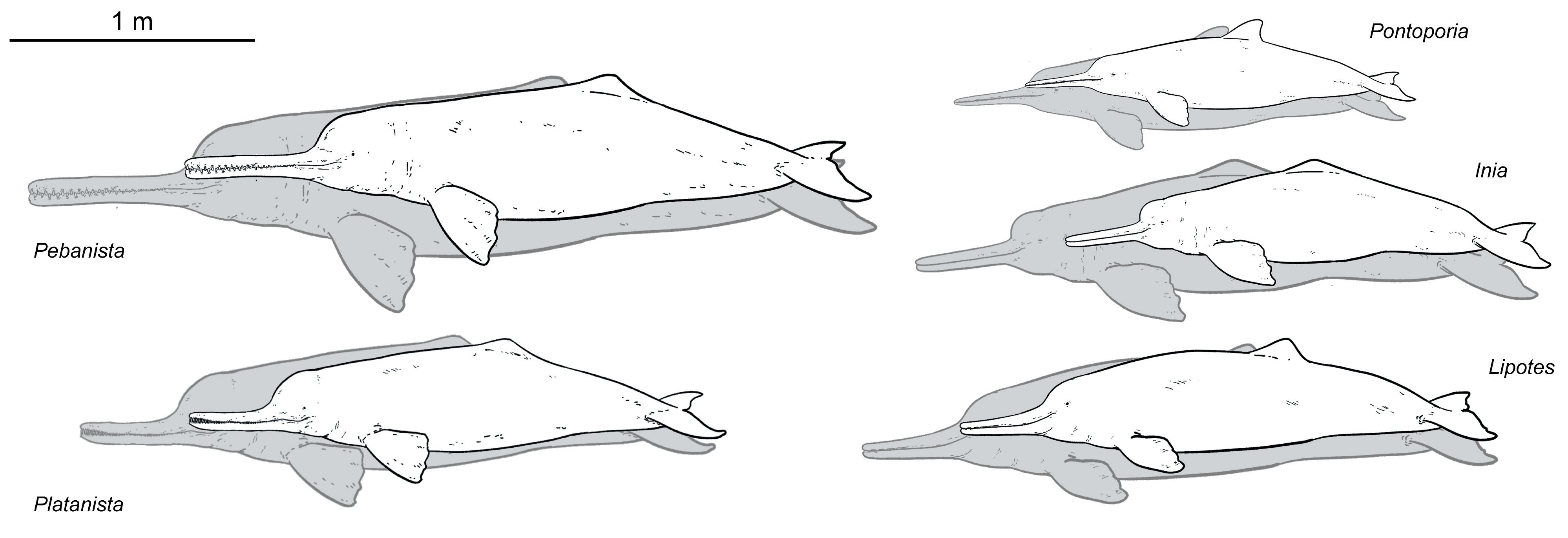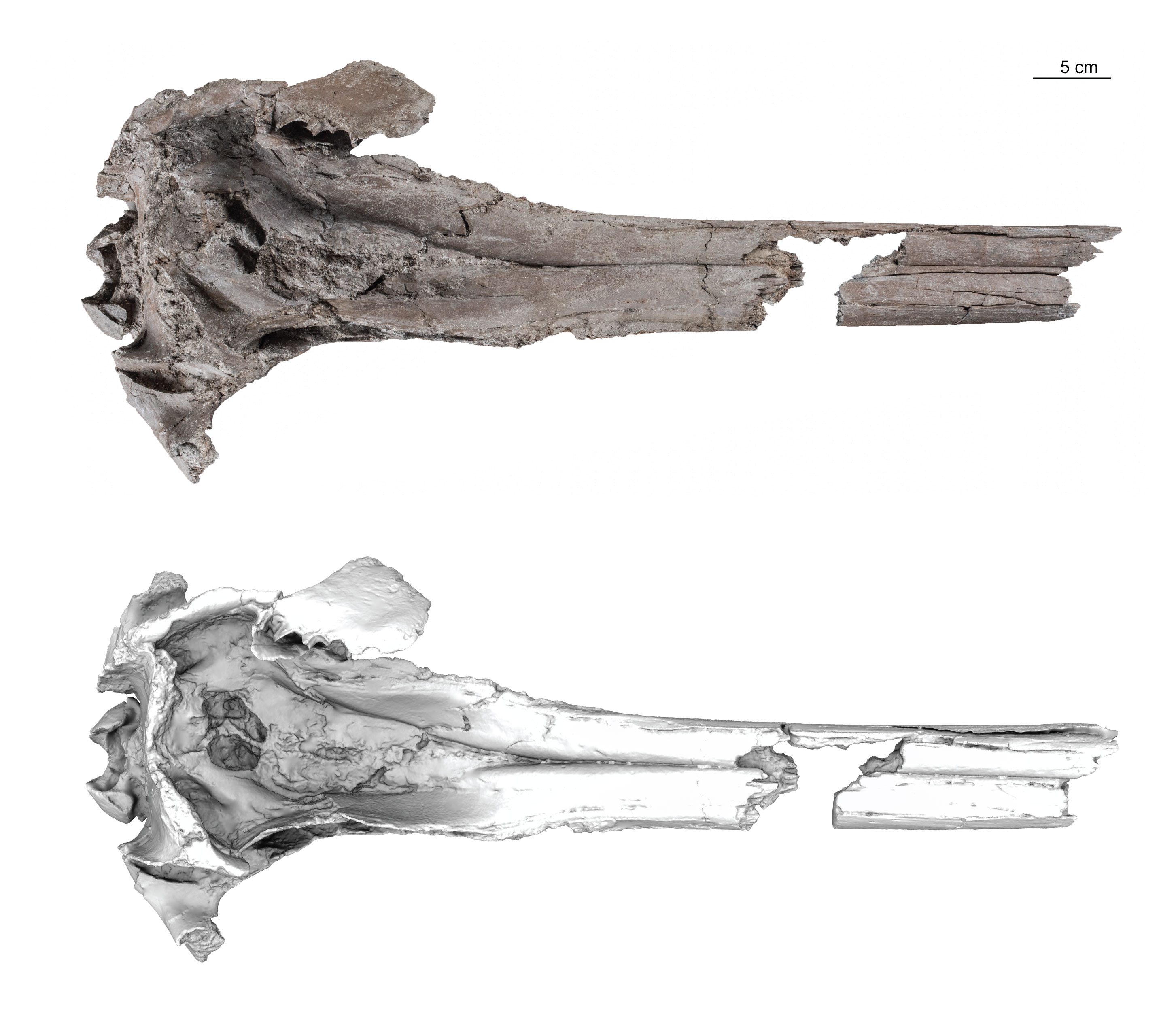Freshwater dolphins in the Amazon and South Asia have captured hearts around the world with their unusual pink skin and status as some of the world’s most threatened mammals. But how did these unusual creatures come to live there? New fossil evidence of a 16.5-million-year-old freshwater river dolphin has helped answer these questions.
The skull and other fossils of the ancient river dolphin were found in Rio Napo, Loreto, Peru in 2018 and date back over 16.5 million years to the Early to Middle Miocene. Named Pebanista yacuruna gen. et sp. nov., the dolphin was thought to have a length of around 3 meters (9.8 feet), making it the largest known of all the freshwater dolphins.

Size comparison of different river dolphins. Pebanista yacuruna (top left) is the largest compared to the four other main species.
Image credit: Jaime Bran & Aldo Benites-Palomino
P. yacuruna was also thought to have been thickset with a long snout and eyes that would have been extremely small and nearly completely blind. It is thought that the ancient dolphins navigated the muddy waters of the Amazon by using their small forehead melons with echolocation. Looking closely at the skull, which features a long snout, big teeth, and a well-developed forehead, the team think this ancient dolphin was fully adapted to freshwater life.

The long snout, large forehead, and tiny eyes suggest that Pebanista yacuruna was fully adapted to freshwater river life.
Image credit: Aldo Benites-Palomino
The Amazon river dolphins that are known today evolved from a lineage known as Iniidae. However, the South Asian river dolphins, known as the Platanistidae, have an evolution that is relatively unknown because fossils of these ancient mammals are so scarce. They include living species like the Ganges river dolphin (Platanista gangetica gangetica), which survives in the waterways of the Ganges river in India.
After conducting phylogenetic analysis the team think that the fossil skull remains are the closest relative to the Ganges river dolphin. This, coupled with the characteristics of the dolphin that allowed it to be fully adapted to freshwater, led the team to believe that this group of platanistids started living in freshwater systems in South Africa and South America before the ancestors of clade Iniidae that gave rise to the modern Amazon river dolphins.
“The finding of Pebanista in proto-Amazonian layers attests that platanistids ventured into freshwater ecosystems not only in South Asia but also in South America, before the modern Amazon River dolphin, during a crucial moment for the Amazonian evolution,” the authors write.
When P. yacuruna was alive, the Amazon would have consisted of vast areas of mega wetland and freshwater environments with an abundance of food and broad diversity of species, leading to its evolution of a greater body size.
The study is published in Science Advances.
Source Link: 16-Million-Year-Old Skull Reveals Huge New Ancient Amazon River Dolphin